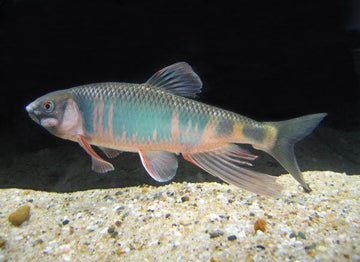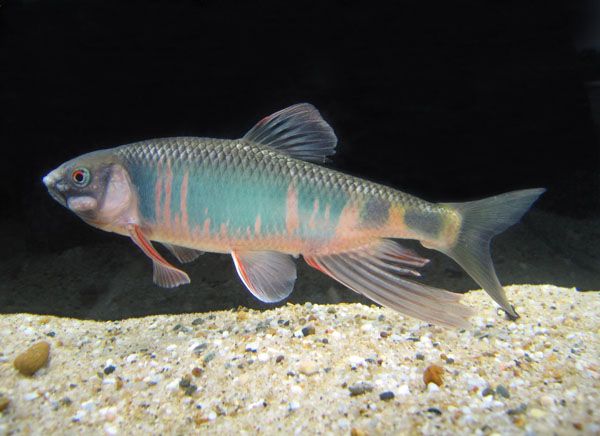Opsariichthys hainanensis – Hainan Sharpbelly (~10–11 cm)
-
Estimated Delivery:Jan 17 - Jan 21
-
UPS Next Day Air Shipping Charges 65$

Opsariichthys hainanensis – Hainan Sharpbelly (~10–11 cm)
A small, slender East Asian minnow endemic to Hainan Island, China. It features a streamlined body, two rows of noticeable rounded tubercles on the lower jaw, and is benthopelagic—preferring mid to bottom water layers. Males reach up to approximately 10.6 cm in length.
Natural Habitat & Distribution:
This tropical freshwater species inhabits clear streams across Hainan. Genetic studies show it spread between Hainan and mainland China in ancient times via land bridges during glacial periods, now forming distinct regional lineages.
Conservation Status:
Not globally evaluated by IUCN but confirmed as a valid species within taxonomic databases. It remains understudied.
Care Guidelines
-
Tank Setup: A modest aquarium of 60–80 L (~15–20 gallons) is suitable for a small group. Include smooth substrate, driftwood, and plants to mimic its natural sheltered streambed environment. Provide moderate flow and reliable filtration with good oxygenation.
-
Water Conditions: Maintain temperate to tropical conditions (~20–24 °C). Aim for neutral pH and moderate hardness, in line with clear freshwater streams.
-
Diet: Likely omnivorous—most closely related minnows accept high-quality flakes, micro-pellets, and occasional live or frozen treats such as daphnia or brine shrimp.
-
Behavior & Tankmates: A peaceful schooling species—best kept in groups of six or more. Compatible with other small, non-aggressive fish like danios, rasboras, or similar stream minnows.
Interesting Biology:
Studies reveal high genetic diversity within the species, with multiple lineages reflecting historic geographic fragmentation. Populations experienced bottlenecks followed by expansion after Pleistocene glaciations.

